SKL is reader supported. When you buy through links on our site, we may earn affiliate commission. Learn more here.
Are you looking to make some non-toxic swaps in your kitchen for a healthier home in 2024?
Whether you are just starting off with the basics, like cleaning supplies or getting deep into the nitty gritty – our team has got you covered!
P.S. While on your journey to a non-toxic home, you may need some more support. We have a full section dedicated to non-toxic living here!
This post is all about the best non-toxic kitchen swaps.
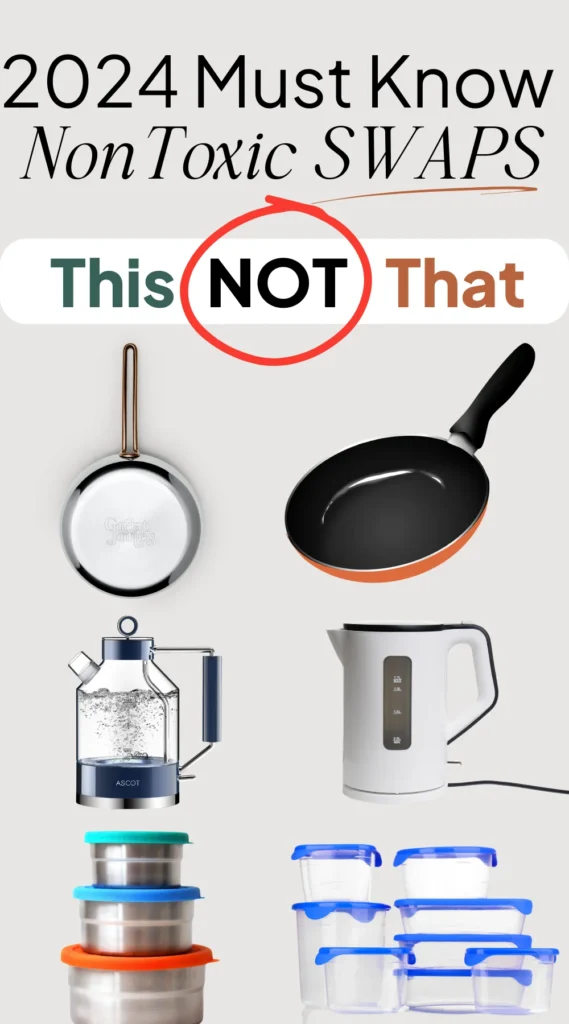
Here’s the thing – we love our living rooms and bedrooms as much as everyone. However, the kitchen is the heart of the home.
But unfortunately, it’s also the one room that can create the most waste and also come in contact with a slew of not-so-healthy chemicals.
From plastic food containers and single-use wraps to rolls and rolls of tissue paper, the list goes on and on. Luckily for us, our wallets, and the planet, there are plenty of easy how-to swaps to make your kitchen as healthy as possible.
When I started making non-toxic substitutions, I felt better about my household. It might be a placebo effect, but you’ll likely never feel bad about making healthier changes that decrease your family’s risk of illness or adverse side effects.
So, for starters, if you want to know how to make your kitchen as non-toxic as possible, you have to analyze the ingredients in foods and cleaners.
Read the labels, even if you think you don’t need to because you might be surprised at what you find.
In order to find the best non-toxic swaps for you, you need to understand what items you’re working with and how they might affect your household, inside and out.
What are non-toxic swaps for the kitchen?
Having non-toxic swaps for the kitchen means making conscious choices to replace traditional kitchen items and products that may contain harmful chemicals, toxins, or environmentally damaging materials with alternatives that are considered safer, healthier, and more sustainable.
Many traditional kitchen items, such as plastic containers, non-stick cookware, and certain cleaning products, can contain harmful chemicals like BPA, phthalates, and perfluorinated chemicals.
The goal is to create a kitchen environment that minimizes exposure to potentially harmful substances.
What toxic chemicals are hiding in the kitchen?
Bisphenol A (BPA)
Found in some plastic food and beverage containers, BPA is a known endocrine disruptor and may leach into food, especially when exposed to heat.
Phthalates
Present in some plastics, phthalates can be found in food packaging materials, plastic wraps, and certain containers. They are known endocrine disruptors and may migrate into food.
Perfluorinated Chemicals (PFCs)
These chemicals are often used in non-stick cookware and can be found in some food packaging materials. PFCs can potentially release toxic fumes when cookware is heated at high temperatures.
Polyvinyl Chloride (PVC)
Found in some plastic food containers, PVC can release harmful chemicals, including phthalates, during its production, use, and disposal.
Formaldehyde
Found in some pressed wood products like particleboard and plywood, as well as certain kitchen cabinets and furniture. Formaldehyde is a known carcinogen and can be released into the air.
Chlorine Compounds
Present in some cleaning products, chlorine compounds can release toxic fumes and may contribute to indoor air pollution when used in confined spaces.
Ammonia
Found in some cleaning products, ammonia can release fumes that may irritate the eyes, nose, and throat. It can also react with other chemicals to form potentially harmful byproducts.
Triclosan
Used in some antibacterial soaps and cleaning products, triclosan has raised concerns about its potential impact on antibiotic resistance and endocrine disruption.
Lead
Present in some older kitchenware, including certain ceramic dishes and cookware with lead-based glazes. Lead exposure can lead to serious health issues, particularly in children.
Don’t know where to start? Here are some amazing nontoxic kitchen swaps to help you kick-start your low-waste upgrade.
This post is all about the best non-toxic kitchen swaps.
Best Non-Toxic Swaps For A Safe & Healthy Kitchen
1. Non-Toxic Cookware
You must have the right tools if you want to make non-toxic meals.
Even using non-toxic ingredients can be negated by using the wrong hardware.
Stainless steel and cast iron are the best materials to work with, and glassware and stoneware are great to bake things in without worrying about harmful materials leaching into your food.
All of these options are safer than many you might find in the average kitchen.
Non-stick cookware might be easy and fun to work with, but it could be more dangerous for you than you think.
When exposed to high heat, the dangerous chemicals used for the non-stick coating can release toxic gases as a result of those chemicals breaking down.
Substitute your non-stick cookware with safer options (like these here!) to take the toxins out of your kitchen.
Trusted Non-Toxic Cookware Brands:
2. Non-Toxic Air Fryers
We absolutely love air fryers are great for our health because they let us enjoy crispy and tasty food with way less oil.
Seriously, with some models, you can enjoy the crunch and tenderness of deep-frying with an impressive 95% less which is amazing!
Plus, they cook food evenly and quickly without the need for harmful substances like PFOA and PTFE.
And here’s the bonus: These non-toxic kitchen swaps are kind to the environment by being energy-efficient.
Here are the 19 best non toxic air fryers in 2024 starting at only $99!
Best Non-Toxic Air Fryer Brands:
3. Plastic-Free Tea Kettles
A kettle made of glass is one of the greatest kitchen tools you can invest in.
Plastic kettles might melt at high heat, but glass kettles and electric kettles can keep your household safe from toxic fumes or the risk of melting.
Stainless steel kettles are by far the most durable type, but they’re a bit harder to clean than glass kettles.
If you make tea regularly, consider swapping to a more sustainable alternative.
Check out our full list of non toxic tea kettles here!
Best Non-Toxic Tea Kettle Brands:
4. Non-Toxic Bakeware
Ready to take your baking game to a whole new level?
Non-toxic bakeware is crafted from materials like ceramic, glass, and silicone – free from nasty chemicals that can sneak into your goodies. Because who needs a side of chemicals with their cookies?
No weird smells, no chemical off-gassing – just the sweet aroma of your baking masterpiece.
You’ll get to savor the pure, unadulterated flavors of your creations without any unwanted extras.
Plus, non-toxic materials are a breeze to clean, saving you time and elbow grease.
Best Non-Toxic Bakeware Brands:
5. Non-Toxic Cooking Utensils
One of the most important things you should realize about cooking is that the materials you use will leach into the food, especially if you’re cooking something acidic, like tomatoes.
One of the most toxic materials you can use during cooking is nylon utensils.
They can’t resist high heat and may end up melting while you’re using them.
When they melt, pieces of these utensils can splinter into your food and have you eating plastic.
They might be more convenient, but they’re not nearly as durable as other materials, like bamboo or silicone.
My favorite is sustainable wood and stainless steel.
Best Non-Toxic Cooking Utensil Brands:
6. Non-Toxic Knives
Ready to chop, dice, and slice your way to culinary perfection?
When it comes to easy low tox swaps for the kitchen, knives are among the most important utensils to consider!
Non-toxic knives ditch the chemicals and opt for materials like stainless steel, ensuring that no unwanted substances leach into your ingredients.
Check out our article to find top-rated chef knives, boning knives, santoku knives, and many more options.
Best Non-Toxic Knive Brands:
7. Non-Toxic Flatware
Here’s another fantastic nontoxic kitchen swap!
Unfortunately, regular flatware might bring unwanted guests to the dining– chemicals, such as such as lead, cadmium, and more.
Non-toxic flatware, crafted from safe materials like stainless steel and bamboo, ensures that your meals stay chemical-free and utterly delicious.
Sturdy, corrosion-resistant materials mean your flatware stands the test of time, resisting wear and tear with every meal.
Best Non-Toxic Flatware Brands:
8. Non-Toxic Food Storage
It’s no secret that plastic bags and containers are loaded with toxic stuff that can seep into your food or drinks.
These chemicals could result in an array of health issues, including brain and developmental problems because they leach into food, particularly when exposed to high temperatures.
For example, bisphenol A (BPA), which is known to be an endocrine disruptor, can interfere with the body’s hormonal system, potentially leading to adverse health effects. YIKES!
So, we’re giving a big no to plastic! Luckily, there are many non-toxic swaps for the kitchen – from stainless steel and glass to silicone and bamboo.
Here are the 21 safest non-toxic food storage brands to check out in 2014.
Best Non-Toxic Food Storage Brands:
9. Non-Toxic Toasters & Safe Toaster Ovens
When it comes to the best non-toxic kitchen swaps, toasters are at the top of our list, and for a good reason.
First and foremost, they eliminate concerns about harmful substances like PFOA and PTFE, ensuring that your food is cooked without exposing you to potentially dangerous chemicals. This is a big win for your health.
Additionally, these appliances often come with energy-efficient features, saving you power and contributing to a more environmentally friendly kitchen.
With the added bonus of versatile cooking options, compact designs, and safety assurance, these non-toxic swaps for the kitchen make for smart, health-conscious choices in the kitchen.
Take your pick from the 11 best non toxic toasters & safe toaster ovens in 2024!
Best Non-Toxic Toaster Oven Brands:
10. Non-Toxic Coffee Makers
We know all too well that both BPA and BPS are linked to potential health concerns ranging from cancer and infertility to thyroid disorders and cardiovascular disease.
Yet, these chemicals are still present in most coffee makers on the market!
Non-toxic coffee makers, on the other hand, feature durable materials like stainless steel or glass, reducing the risk of leaching harmful chemicals into your coffee.
Here are the best non-toxic coffee makers & machines in 2024 that’ll satisfy even the most demanding sippers.
Our Favorite Non-Toxic Coffee Maker Brands:
11. PFAS Water Filters
We’d love nothing more than to drink water straight from the tab, however, Per- and polyfluoroalkyl substances (PFAS) have raised concerns due to their persistence and potential health risks.
To put it simply, public water treatment facilities often use chlorine or chloramine to disinfect water.
While this is essential for killing harmful microorganisms, it can result in an array of health issues. Not to mention the unpleasant taste and odor.
PFAS water filters effectively remove impurities, contaminants, and pollutants from the water, ranging from sediments and chlorine to heavy metals and microbial contaminants.
Plus, PFAS can be incorporated into various filtration systems, such as reverse osmosis systems, whole-house systems, and point-of-use filters like pitcher filters.
Here are the 8 best PFAS water filter brands for healthy drinking water.
Best PFAS Water Filter Brands:
12. Organic & Fairtrade Coffee
Here are the most delicious non-toxic swaps for the kitchen: Fair Trade coffee blends, duh.
Instead of pesticides and synthetic fertilizers, organic fair-traded coffee is grown without the nasty stuff.
Without the interference of chemicals, you get to experience the genuine taste of coffee that’s healthier for you and our Earth.
Most importantly, organic coffee companies ensure that the farmers behind your favorite blends receive fair wages and work in humane conditions.
Best Organic & Fairtrade Coffee Brands:
13. Organic & Fairtrade Tea
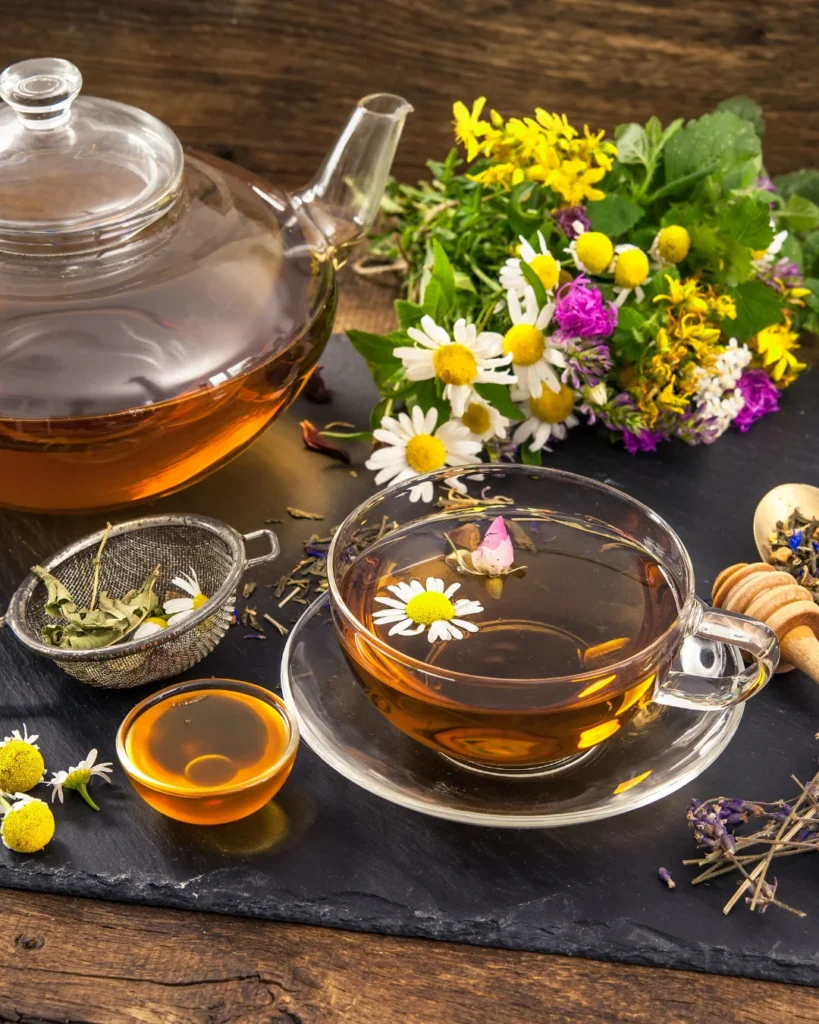
Next up is tea – an often-forgotten non-toxic swap that only tantalizes your taste buds but also minimizes the harm we do to our Earth.
Grown without synthetic pesticides, herbicides, fungicides, or chemical fertilizers, organic teas offer a pure, unadulterated taste that’s a treat for both you and the planet.
Also, by choosing fair trade, you’re supporting farmers committed to sustainable practices, ensuring a healthier environment for generations to come.
From lush green teas to comforting herbal blends, there’s something for every taste.
14. Non-Toxic Kitchen Cleaners
Not every all-purpose cleaner is safe. Some contain toxic chemicals that can be harmful to children and pets.
Plus, if you use disposable gloves and masks to clean because you’re afraid of touching the product, that’s more waste being sent to landfills.
It helps to know what’s in your cleaners and what you can use as substitutions.
For example, you can use distilled white vinegar to tackle grime, but it isn’t a great disinfectant, so don’t rely on it to keep your household safe from bacteria.
Instead, citric acid can help you keep viruses away from your home because it contains an agent that breaks down proteins.
Look for all-natural cleaners or make your own at home. Just make sure not to accidentally mix anything dangerous.
Non-Toxic Household Cleaning Brands:
15. Non-Toxic Dish & Dishwasher Soap
What’s wrong with run-of-the-mill dishwashing soap?
The Environmental Working Group (EWG) evaluated 326 dish soaps, and the results were shocking.
About 65% got a D or an F, including many of the big-name brand’s soaps!
Non-toxic dish soaps don’t have scary chemicals or preservatives in their ingredient lists.
Consider also swapping to non-toxic dishwasher soap when you put your dishes in the dishwasher.
Dishwashers are more energy-efficient than washing dishes by hand, so consider buying a non-toxic variation of what you typically use.
Best Non-Toxic Dish Soap Brands:
16. Alternative Storage Bags
There are so many great alternatives to zip lock bags nowadays: Linen, compostable ziplock bags, silicone bags, etc.
I love silicone storage bags as a quick way to store snacks or even lunch for the next day.
These bags are a replacement for the plastic sandwich bags you may use in your household.
Since they aren’t single-use, they can be washed and used again the next time you need them.
Just a handful of these pouches can have a packed lunch running smoothly for a week.
These airtight bags can keep your sandwiches and snacks alike crisp and ready to eat whenever mealtimes roll around.
In a pinch, they can also be storage containers for leftovers that wouldn’t fit elsewhere!
Our Favorite Storage Bag Brands:
17. Compostable Trash Bags
Seriously, did you know that, in just one year, the United States alone generated a staggering 730,000 tons of plastic bags, sacks, and wraps?
These bags can take anywhere from 20 to 500 years to decompose!
So, why add up to this statistic when you can easily opt for biodegradable, non-toxic swaps for the kitchen?
The 10 best compostable trash bags in 2024 are specially designed to break down naturally and completely, just like organic matter, when exposed to specific conditions.
This means that these non-toxic kitchen swaps contribute to the production of nutrient-rich compost, which can be used to nourish gardens, plants, and crops all while eliminating landfill pileups and waste. How cool is that?
Best Compostable Trash Bag Brands:
18. Compostable Brushes
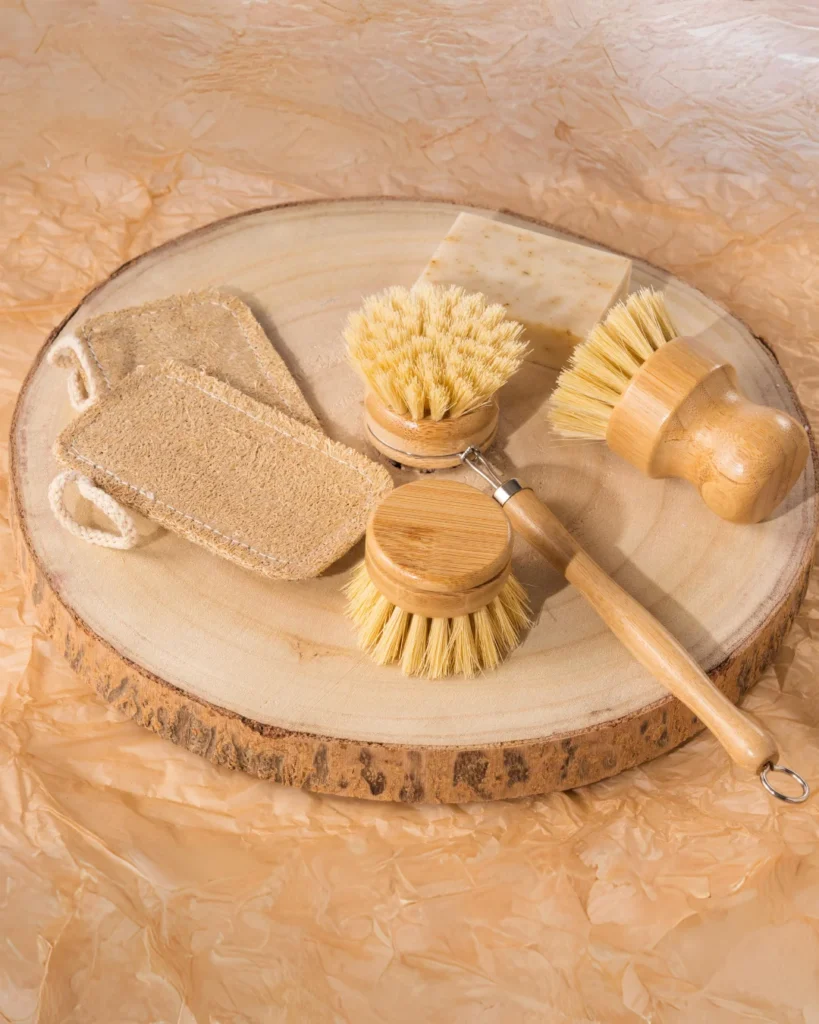
If you use a brush to clean your dishes like I do, you’ll enjoy this suggestion.
How many times have you gotten frustrated with your plastic brushes with plastic or synthetic bristles?
You can replace your plastic dish and bottle brushes with compostable brushes.
After they’ve outlived their usefulness, you can dispose of the whole thing or the brush’s head, depending on what part of it is compostable.
By composting the organic material you don’t finish or can’t use anymore, you’re limiting the amount of trash that goes to a landfill.
Beyond that, it can also be used as fertilizer for your plants.
This fertilizer might help your plants grow better than store-bought fertilizer can, and it’s cheaper, too.
Zero Waste Kitchen Brush Brands:
19. Natural Sponges
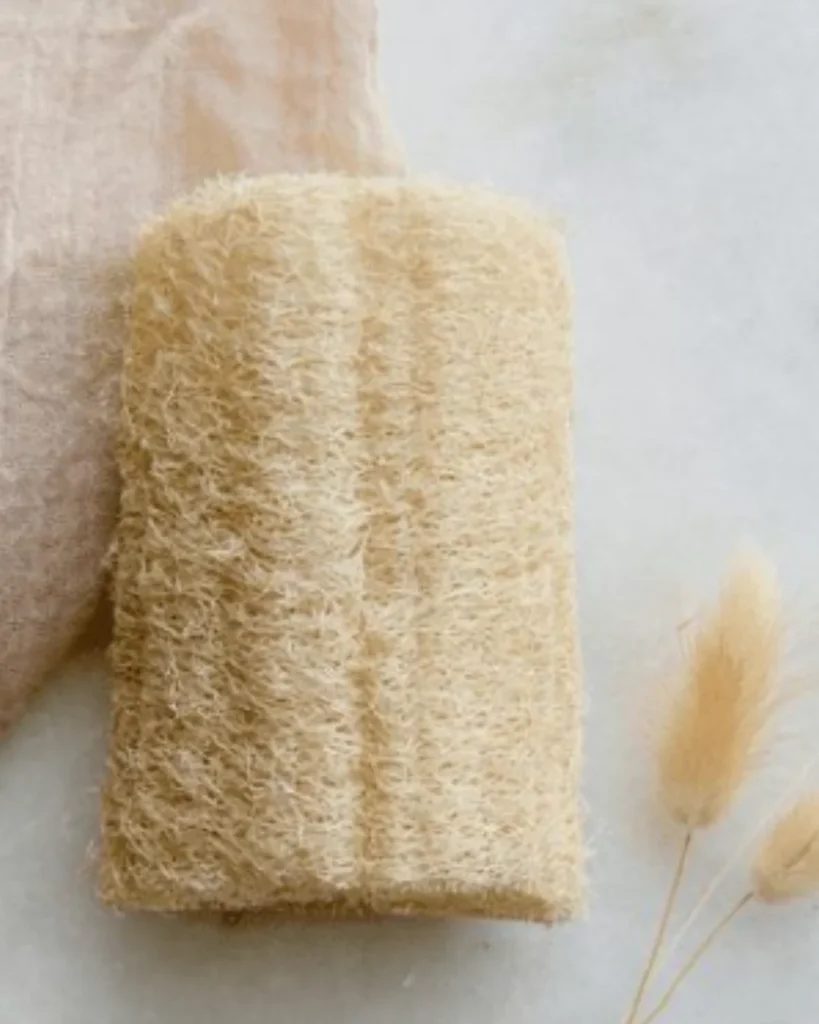
If you use sponges, you know how quickly they can get dirty.
Synthetic sponges can become breeding grounds for bacteria and end up making your dishes far dirtier than they were before you washed them.
While there are ways to sanitize your sponges, the best move is to switch to a natural form that will keep your whole household safe.
Natural is better than synthetic, especially since you won’t need to worry about what your sponge was made with and, therefore, what’s going on in your dishes.
Natural sponges feature enzymes that can reduce the growth of bacteria, making them last longer in your kitchen.
It’s worth making the swap if you want to know what’s in everything, from your food to what you use to clean your dishes.
20. Skip The Paper Towels & Grab Cloth
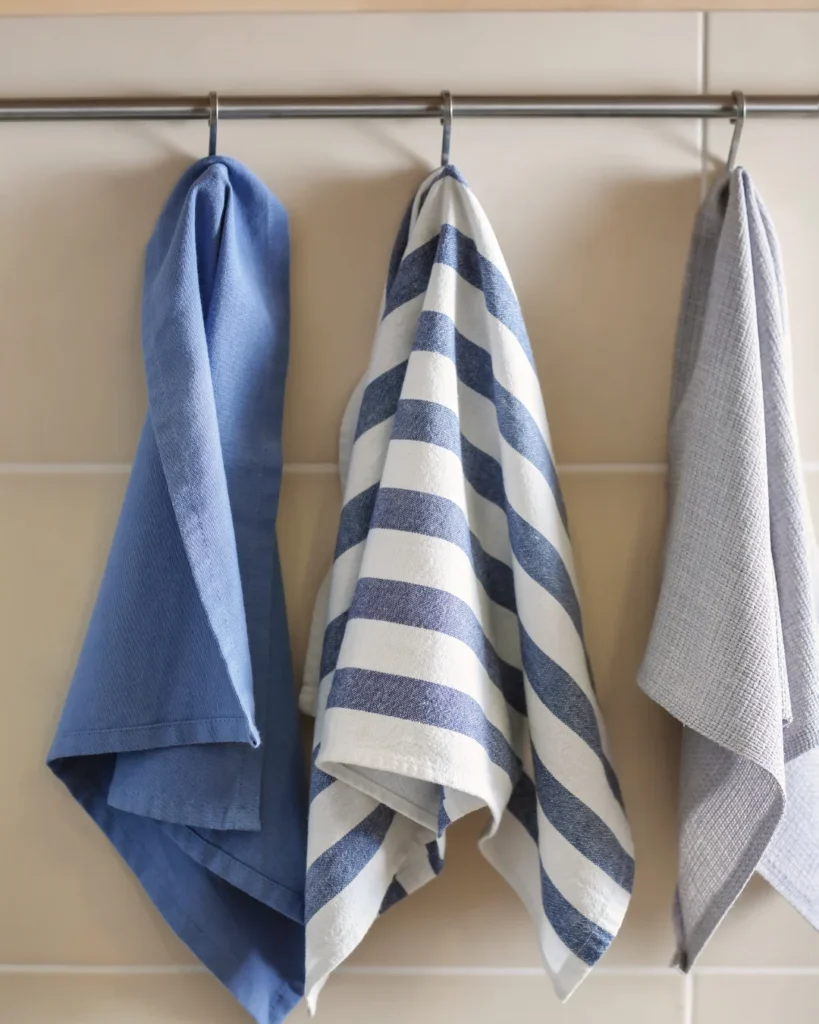
One of the best ways to give back to the environment is by reusing your towels and rags.
While they may not always be aesthetically pleasing, repurposing old clothing items as cloths for your kitchen can grant them longer life spans.
Many people turn to microfiber towels, but they often shed microplastics, which science doesn’t know a lot about yet.
Microfibers are just some of the plastics that infiltrate the ocean if they’re not disposed of responsibly, and no one knows how they’ll affect humans yet.
21. Whole Food VS Processed
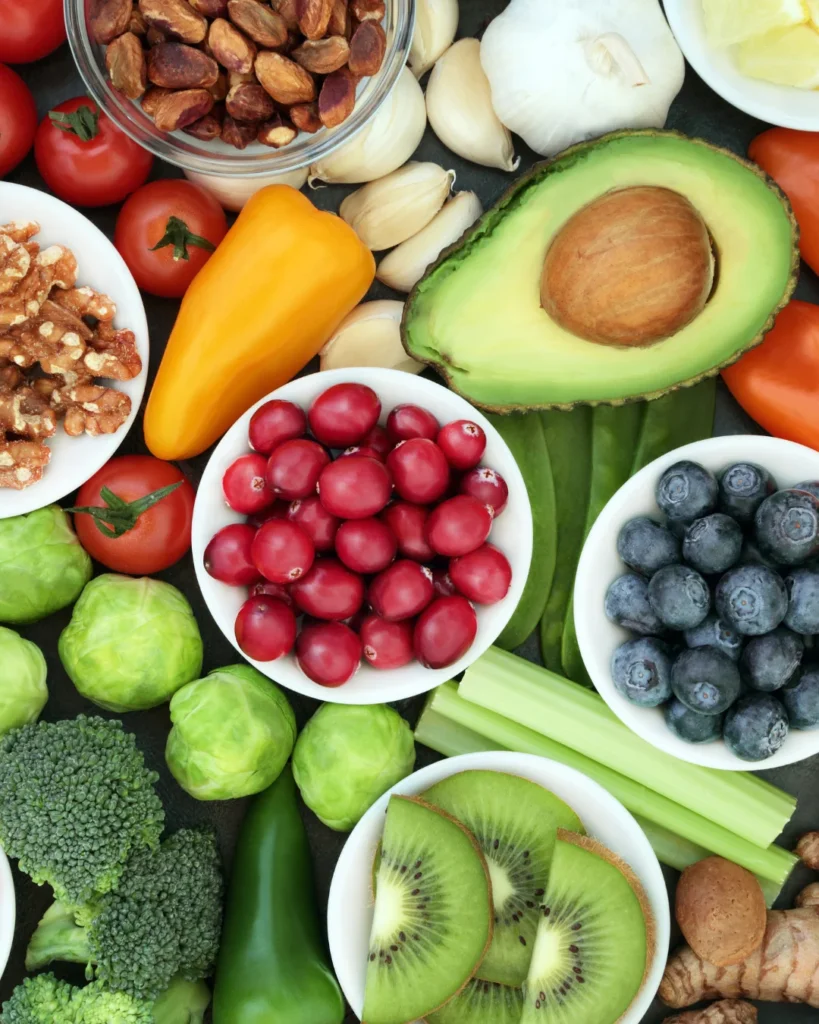
It’s no secret that whole foods (think fruits, veggies, legumes, seeds, eggs, etc) are much healthier than processed foods.
Now, to be clear, not all processed foods are unhealthy.
Processed foods include canned and frozen food (which, of course, we do not consider to be unhealthy).
The processed foods we are speaking of are those that have limited nutritional value, high salt, high sugar, and unhealthy fats.
The great thing about whole foods? When we shop seasonal and local, they can be extremely budget-friendly!
Non-Toxic Kitchen Swaps FAQs:
How can I make my kitchen as non-toxic as possible?
The best way to make your kitchen as non-toxic as possible is to use trusted (tried and tested!) materials. Natural is always better when it comes to toxic products.
If something sounds too good to be true, it most likely is. A non-toxic home is usually a very simple one, with natural and sustainable materials.
Which kitchen utensils are the most toxic?
The most toxic kitchen utensils are nylon utensils (plastic). They can’t resist high heat and may end up melting while you’re using them.
When they melt, pieces of these utensils can splinter into your food and have you eating plastic. They might be more convenient, but they’re not nearly as durable as other materials, like stainless steel.
Our favorite non-toxic utensils are sustainable wood and stainless steel.
What is the safest material to cook with?
Hands down, the most sustainable materials to cook with are stainless steel and cast iron, however, cast iron does come with a warning to those with a risk of iron overload.
Stainless steel and cast iron are the best materials to work with, and glassware and stoneware are great to bake things in without worrying about harmful materials leaching into your food.
All of these options are safer than many you might find in the average kitchen.
This post is all about the best non-toxic kitchen swaps.
You may not be able to make all these swaps right away, and that’s okay. I’ve made one small switch at a time, and I’m still looking for alternatives for other things in my kitchen.
It might take some time, but as long as you have a kitchen you’re proud of that promotes sustainability both for the environment and your wallet, you’ll be happy with your home.
The most toxic items in your kitchen are those you don’t actually know are toxic. If you continue using non-stick cookware or regular dish soap, you might be harming yourself and your family rather than doing more good.
Seek out all the items you use in your kitchen and research them. Knowing what you’re working with is the first step to creating a truly non-toxic and sustainable kitchen.
If you enjoyed this article on Non-Toxic Kitchen Swaps, check out these other articles below!
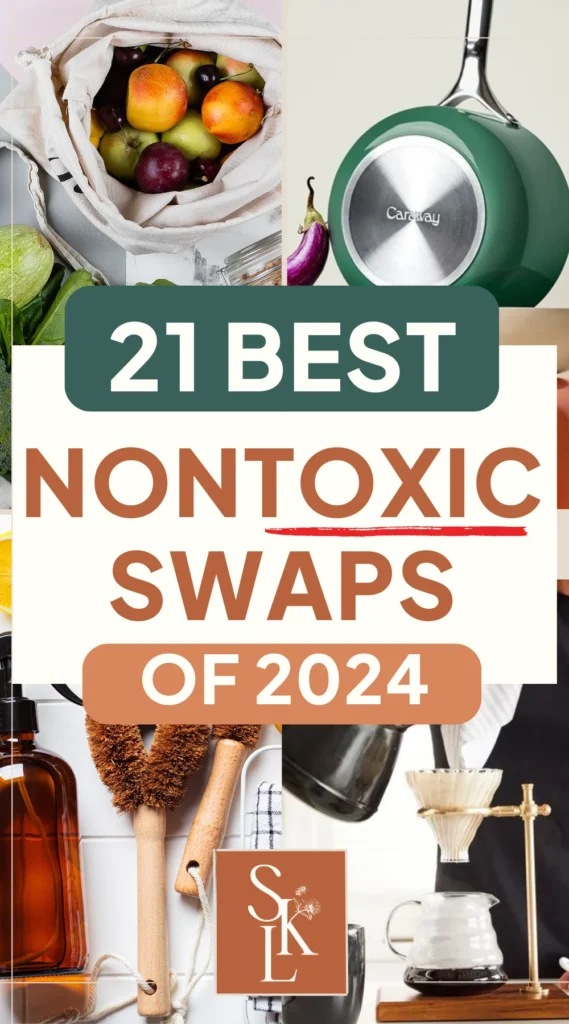
 Enter To Win Over $1500+ In Non-Toxic Goodies!
Enter To Win Over $1500+ In Non-Toxic Goodies! 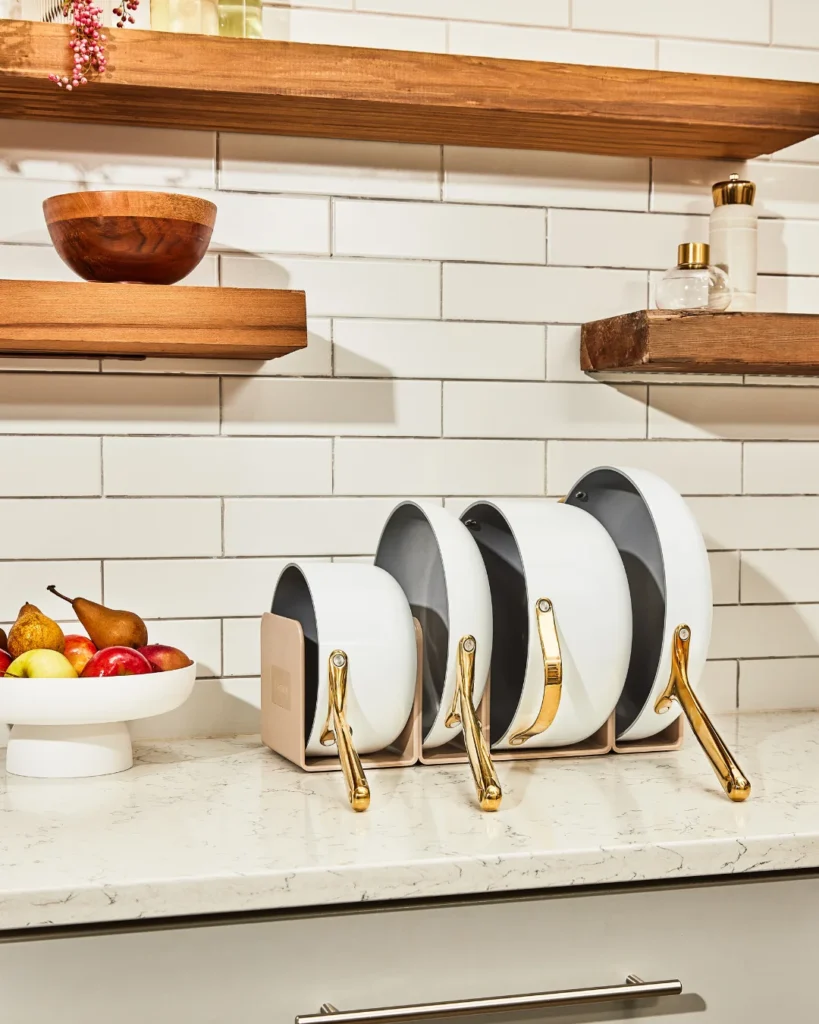
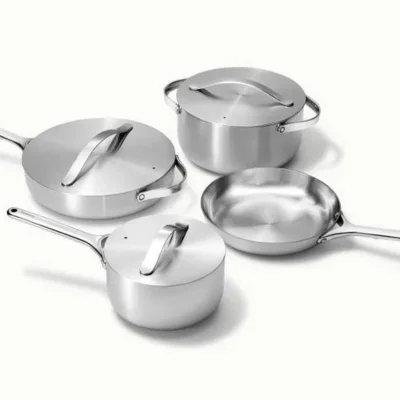
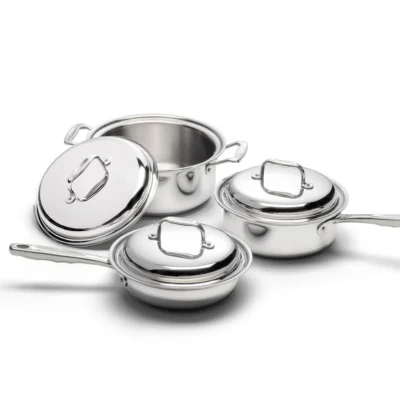
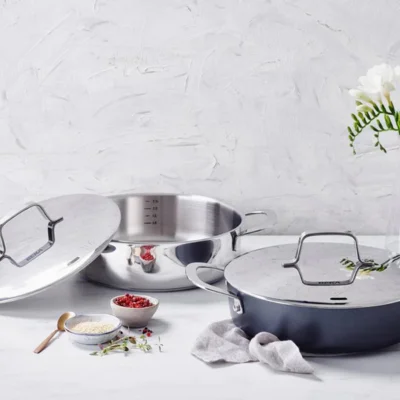
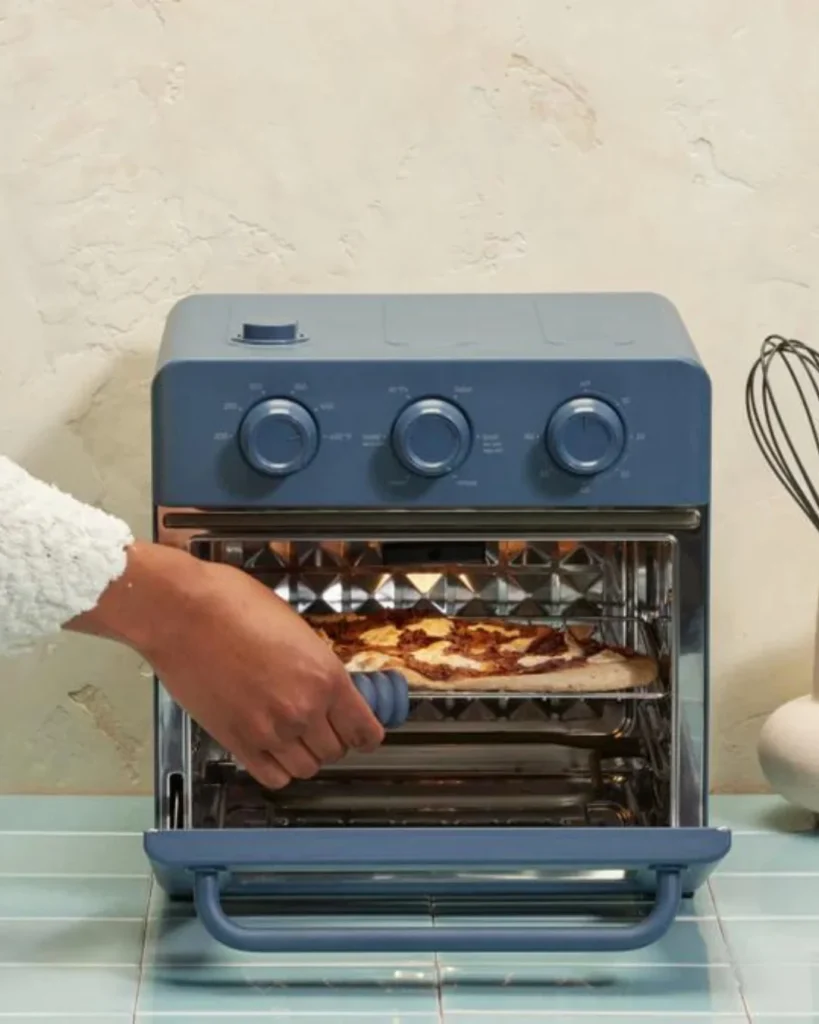
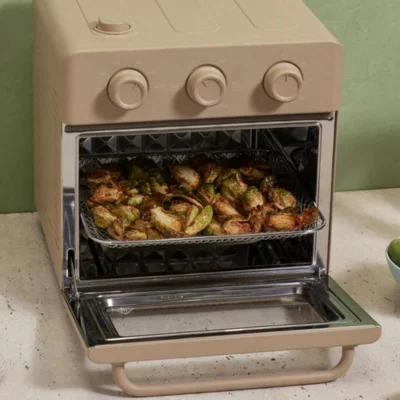
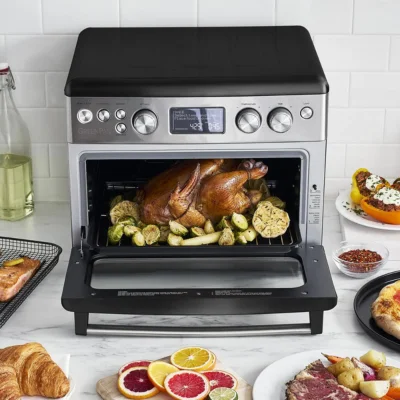
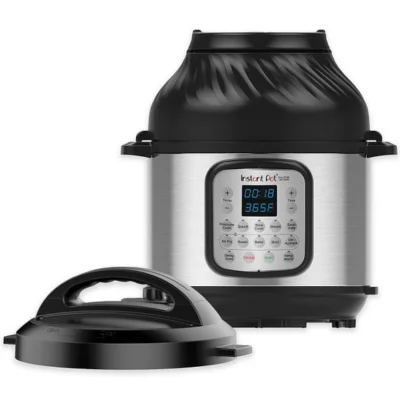
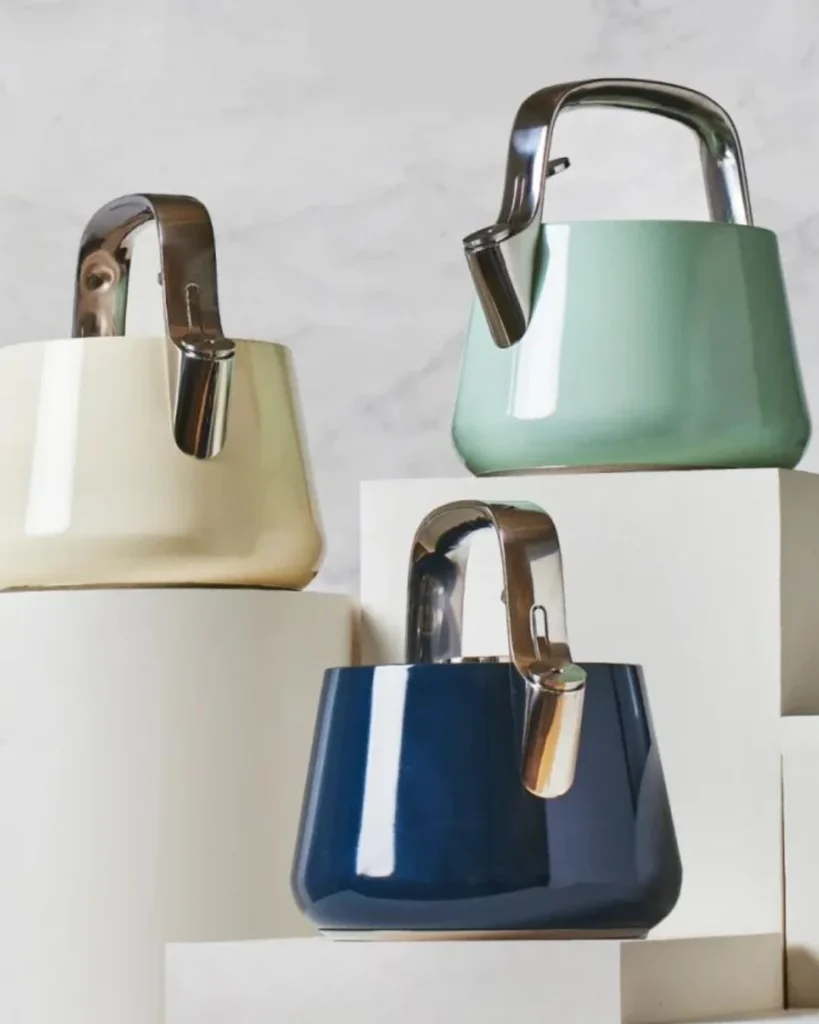
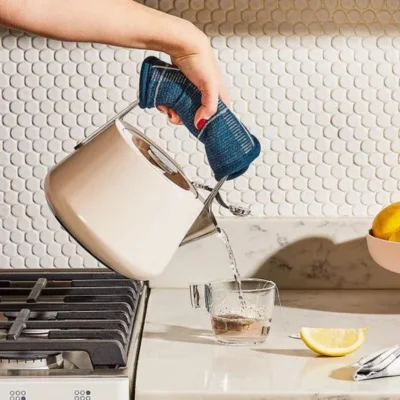
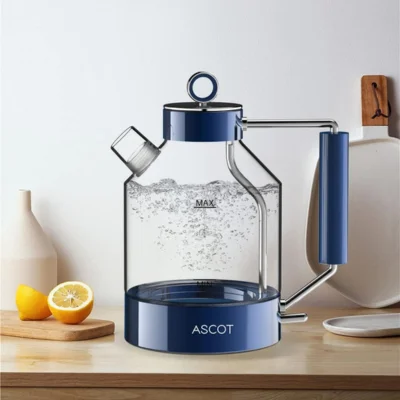
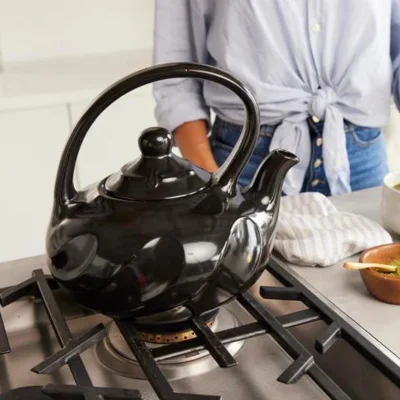
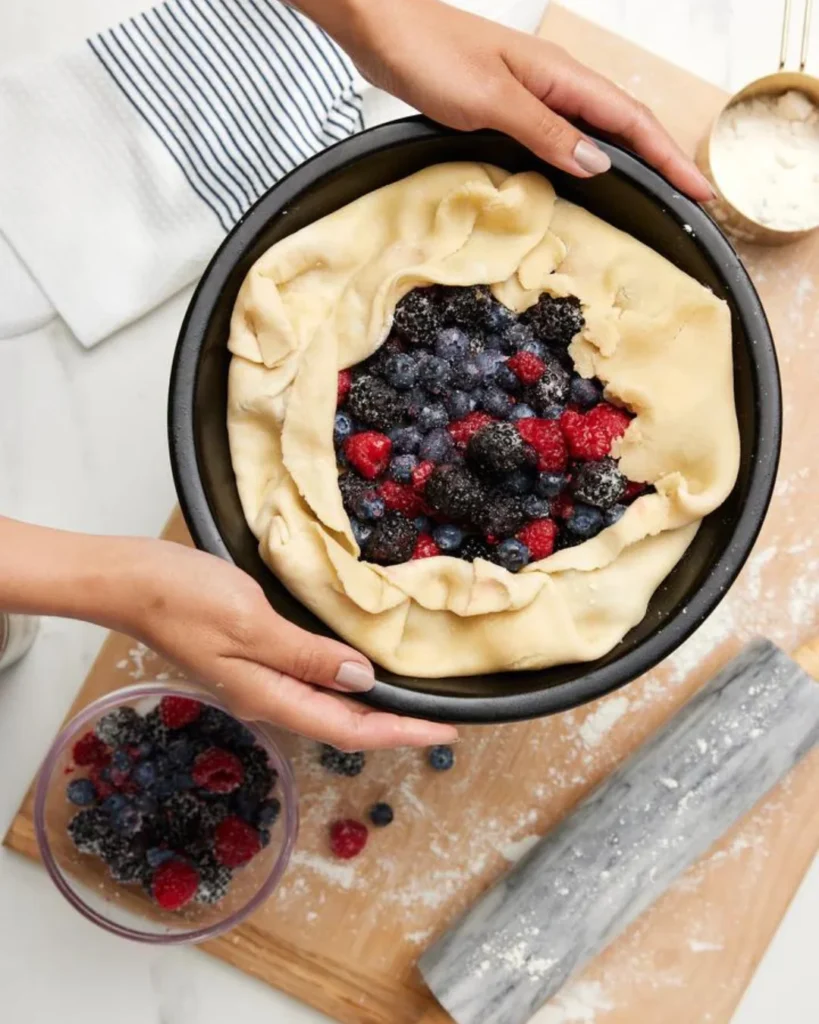
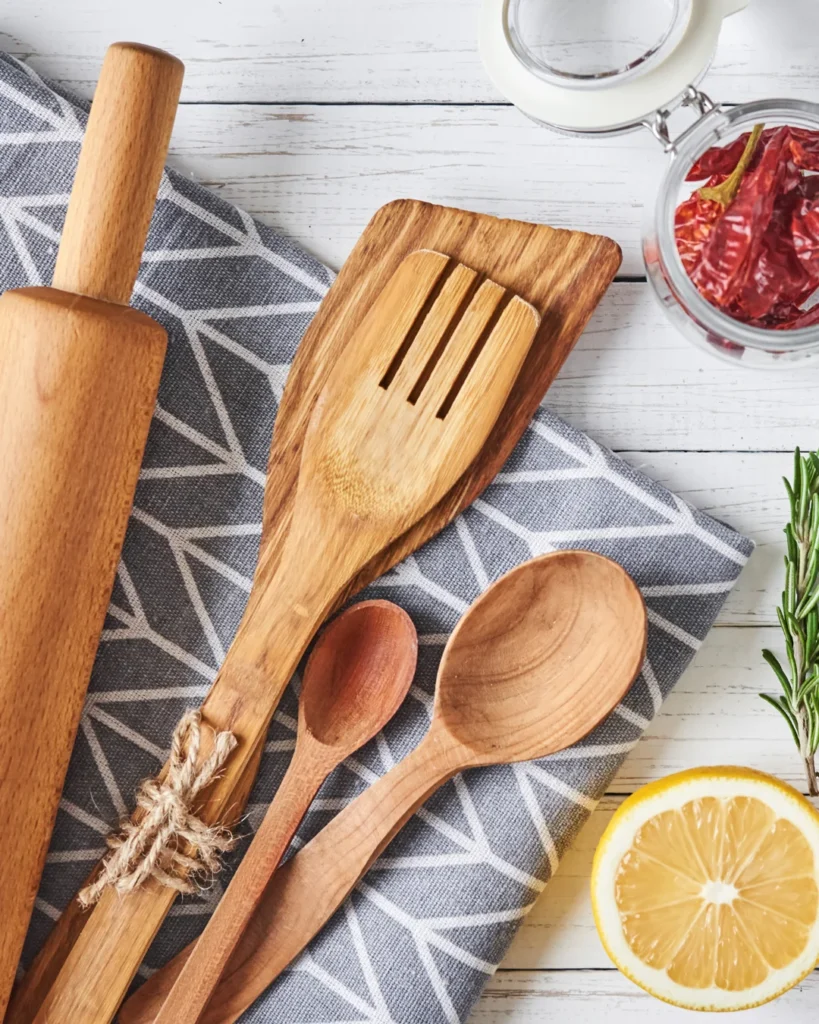
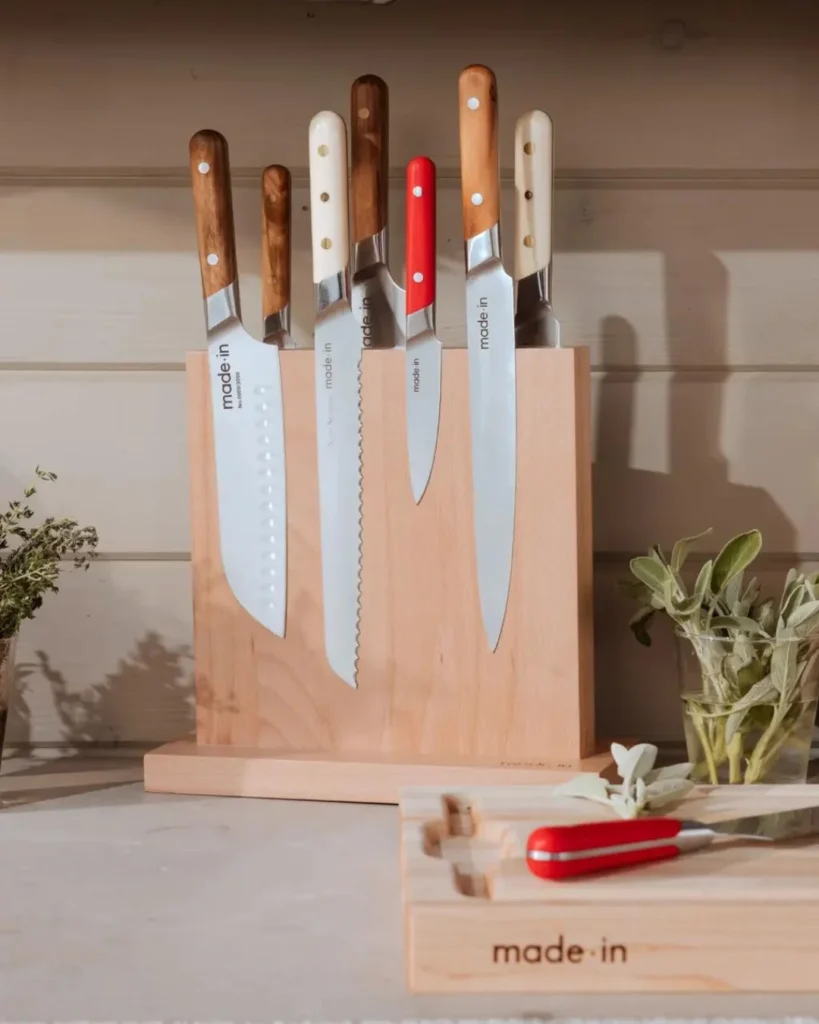
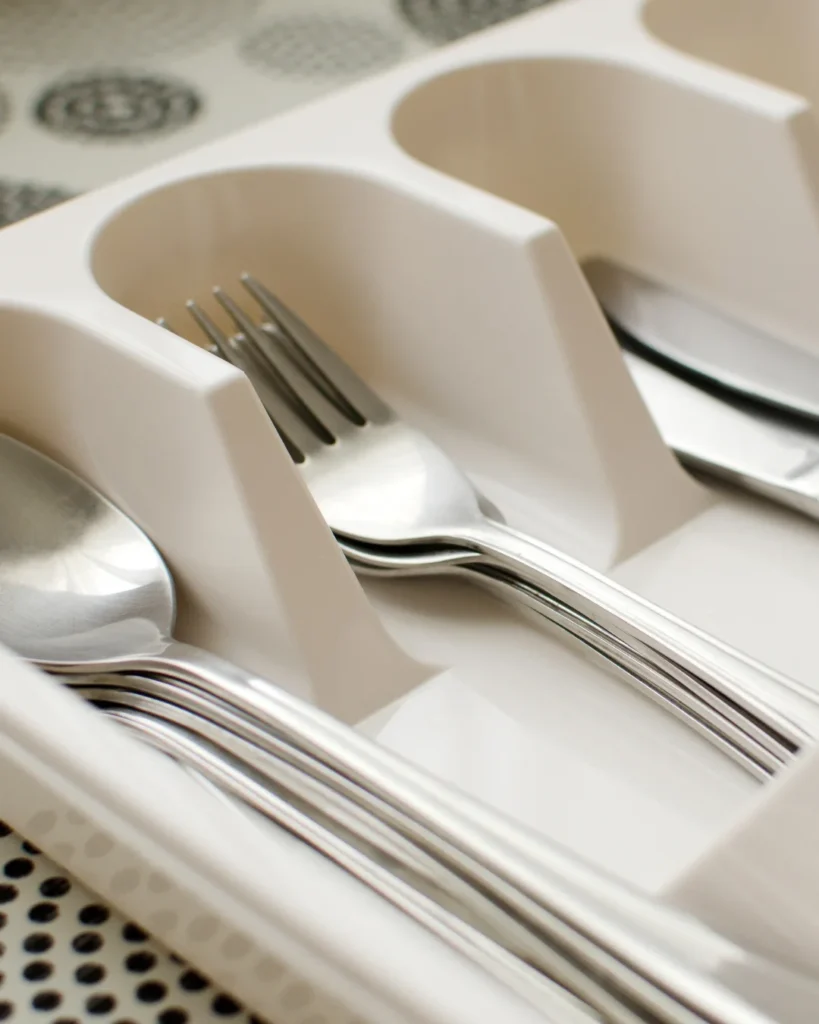
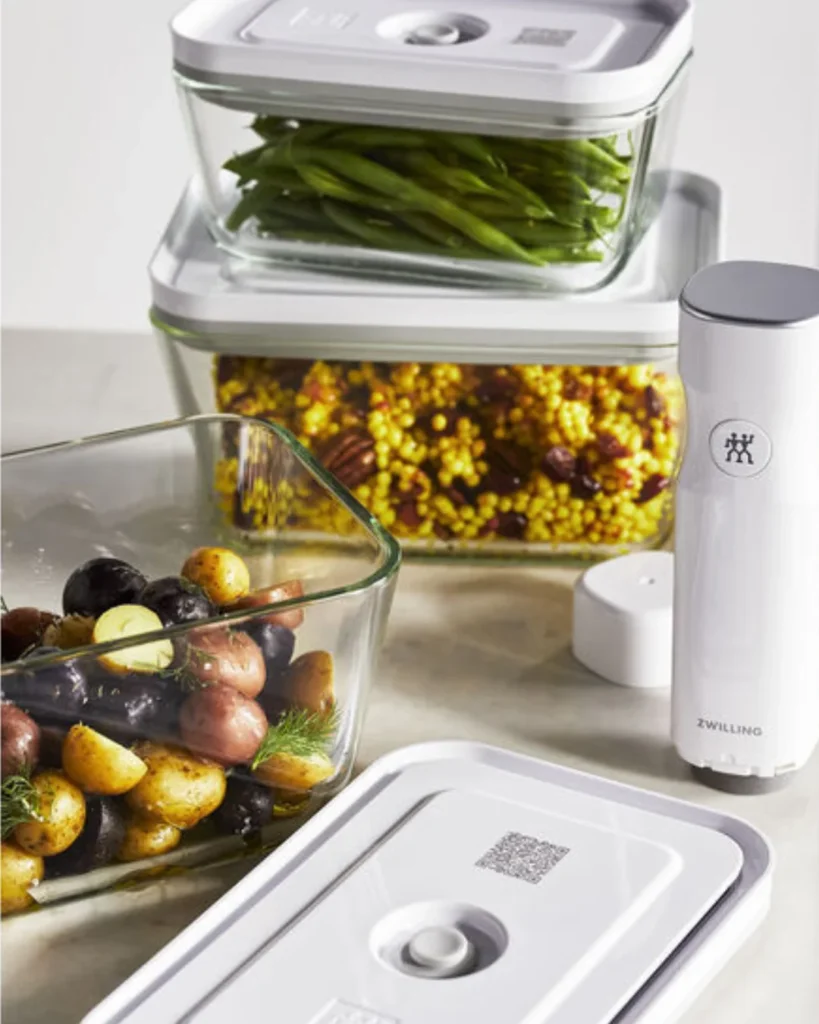
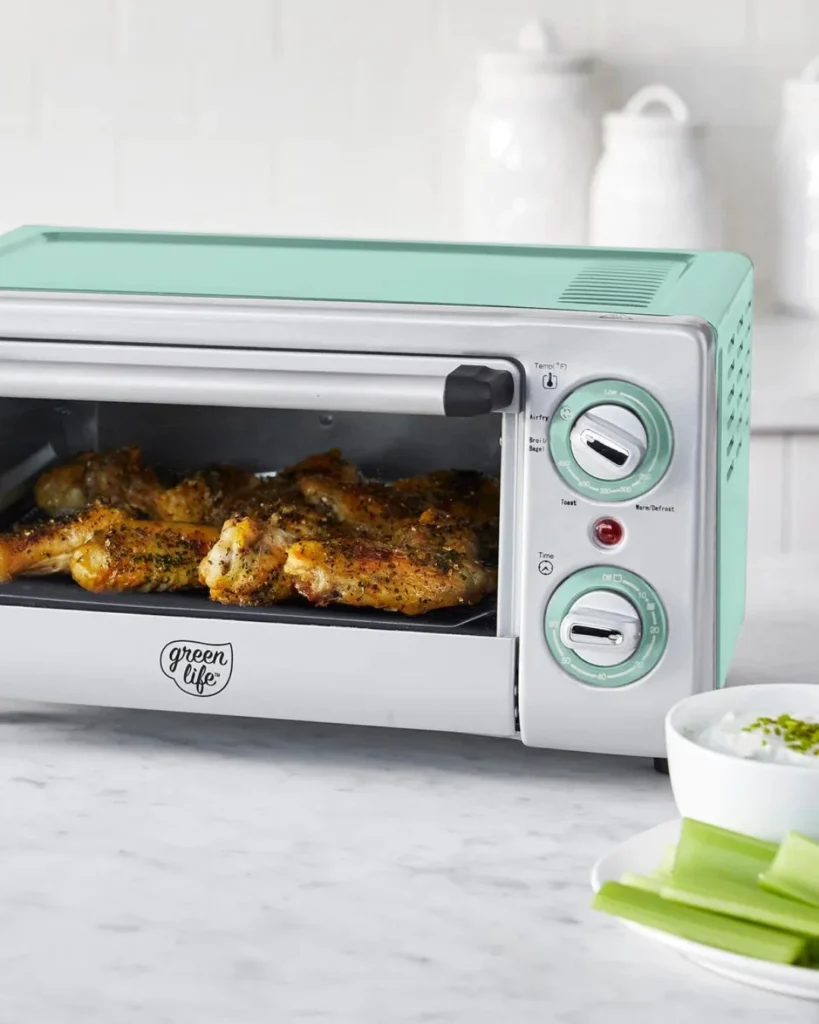
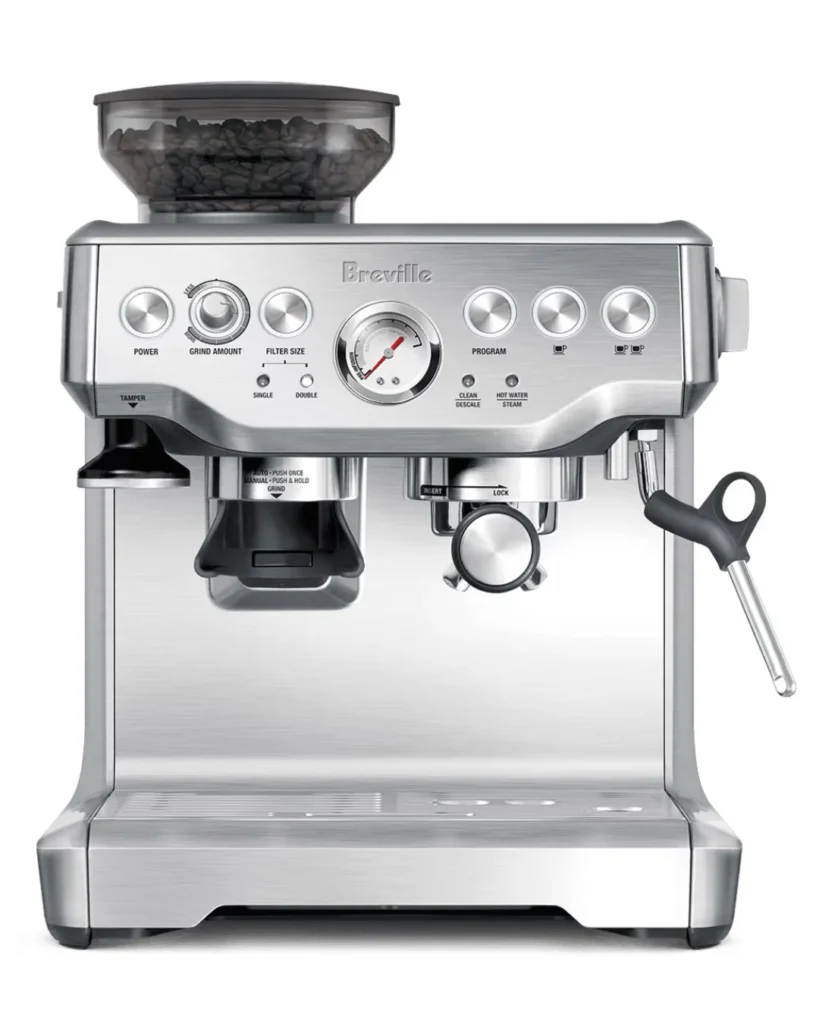
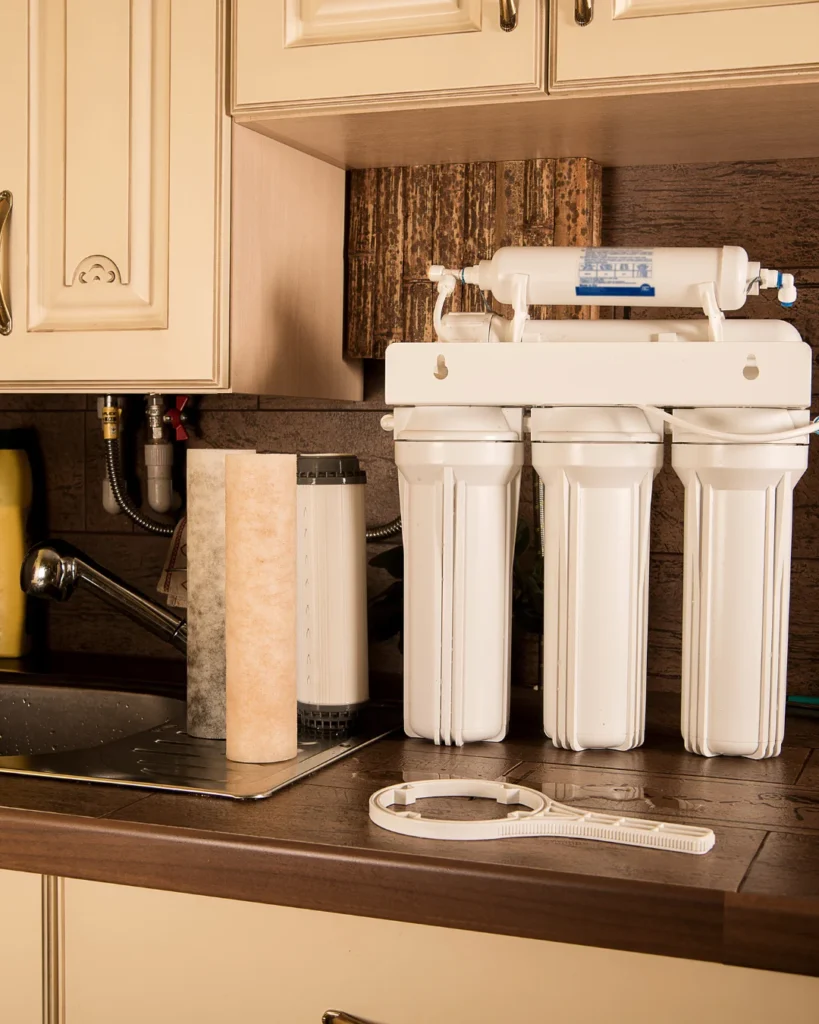
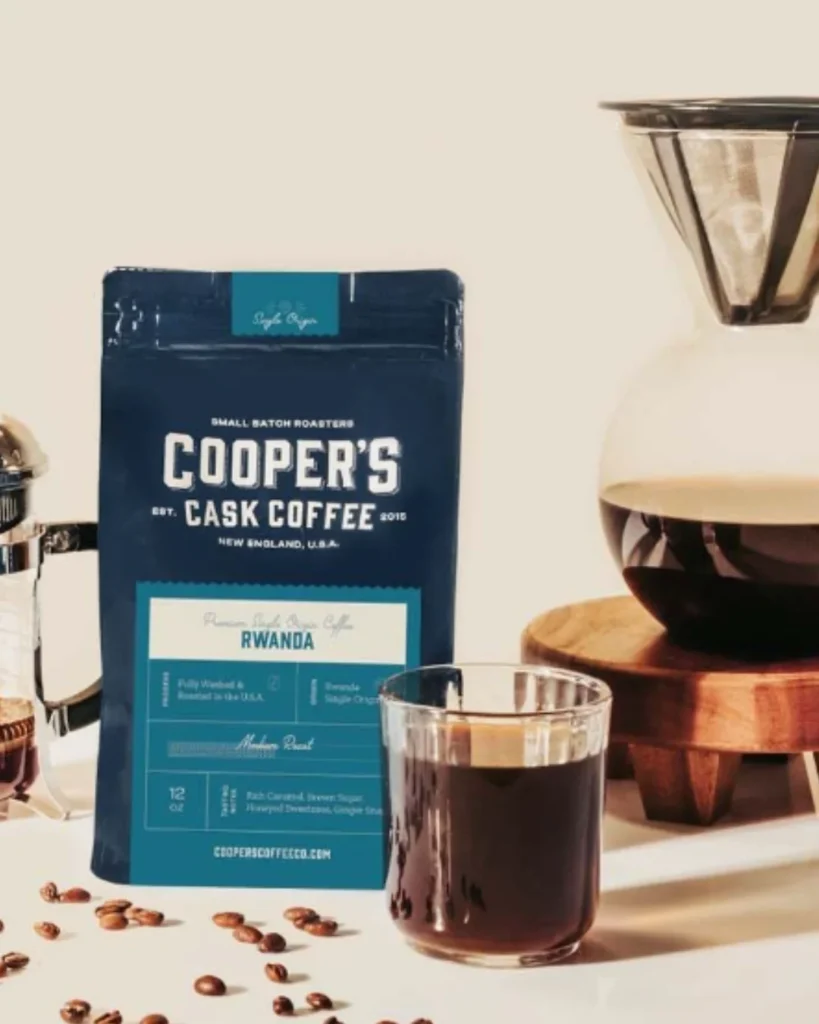
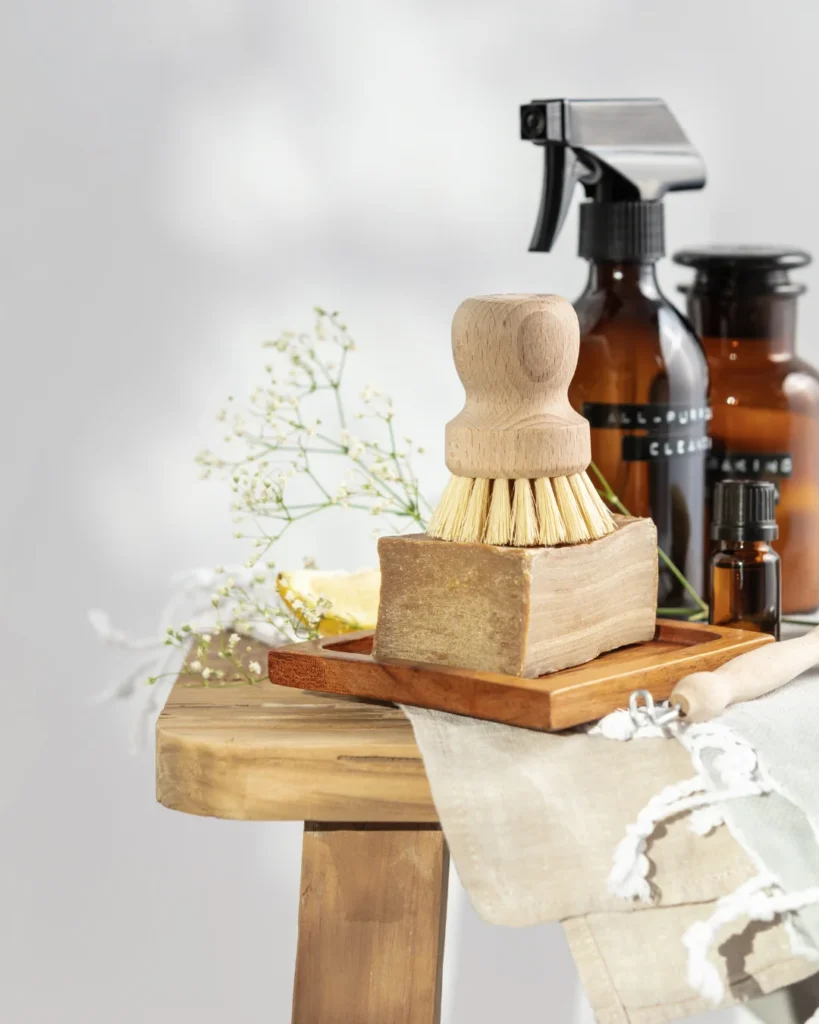
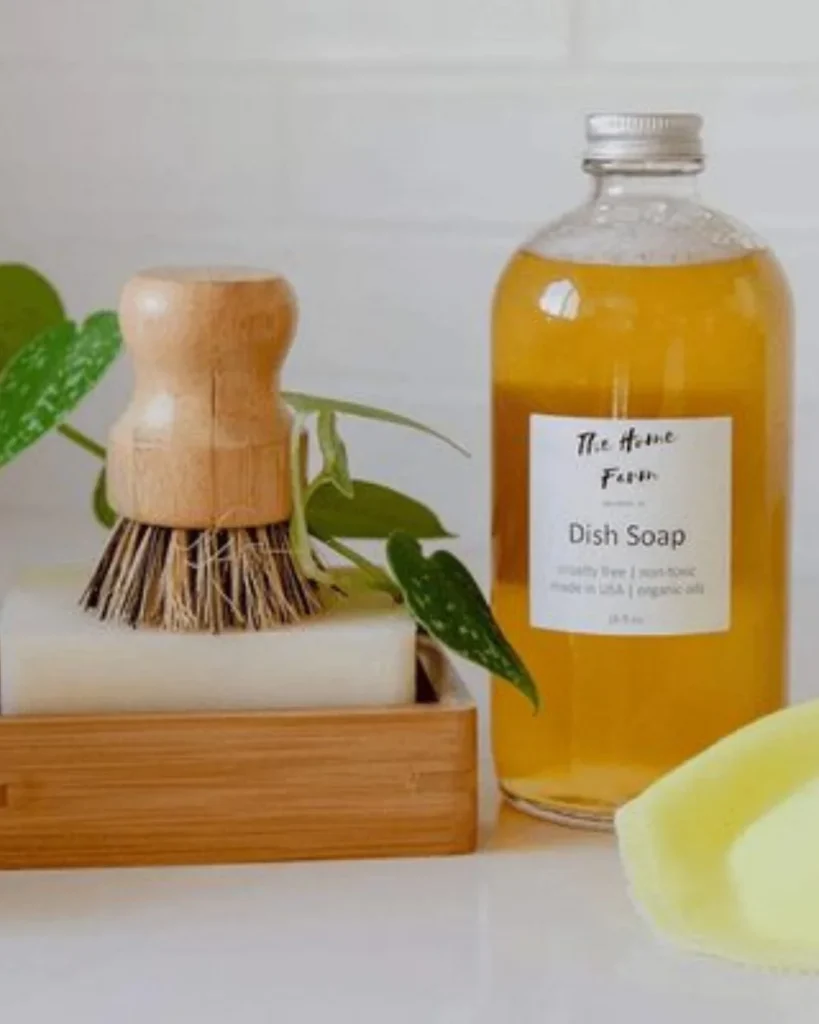
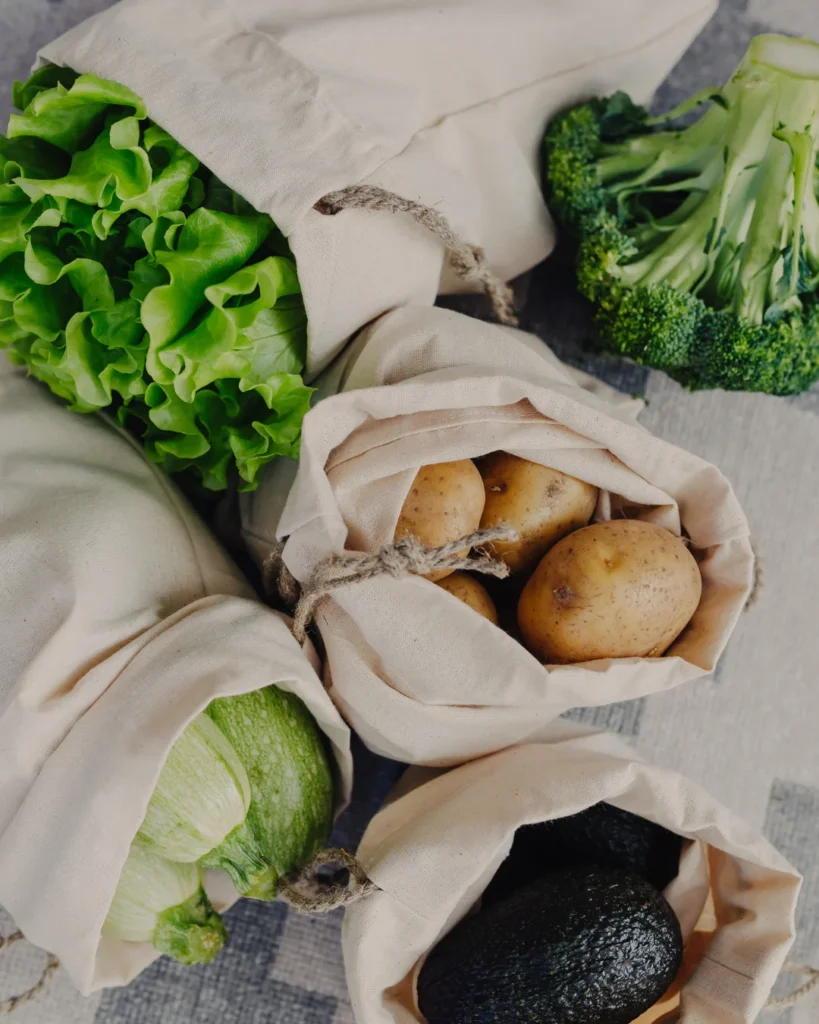
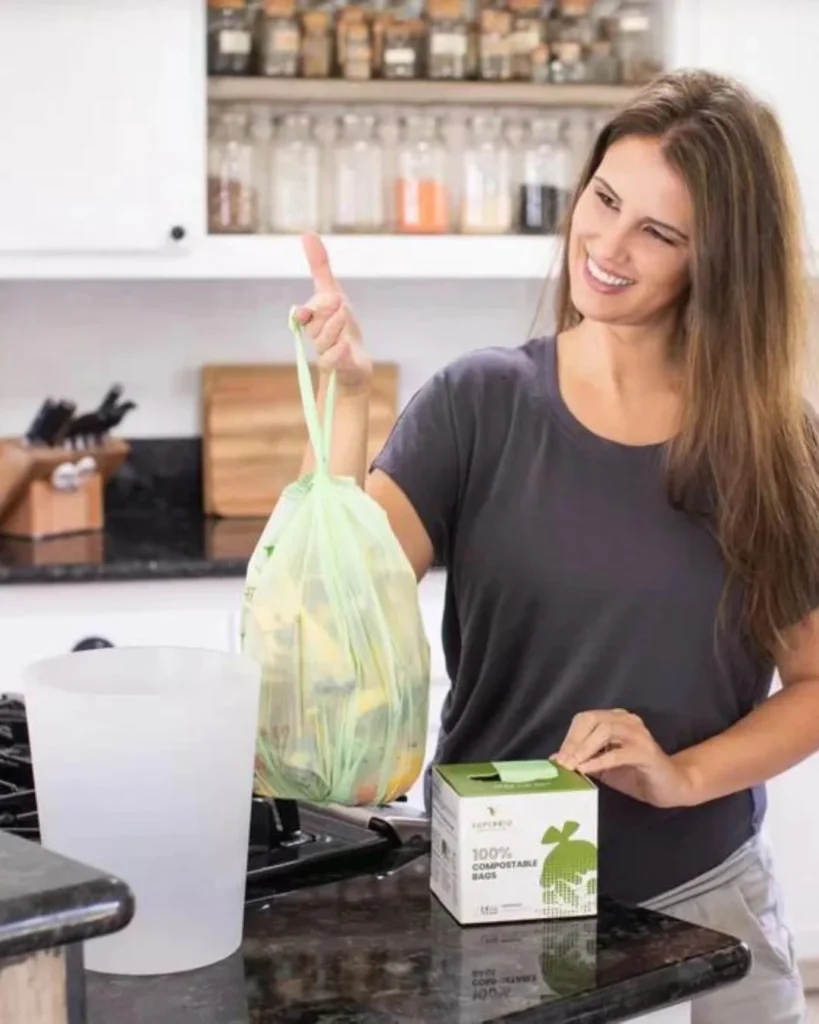
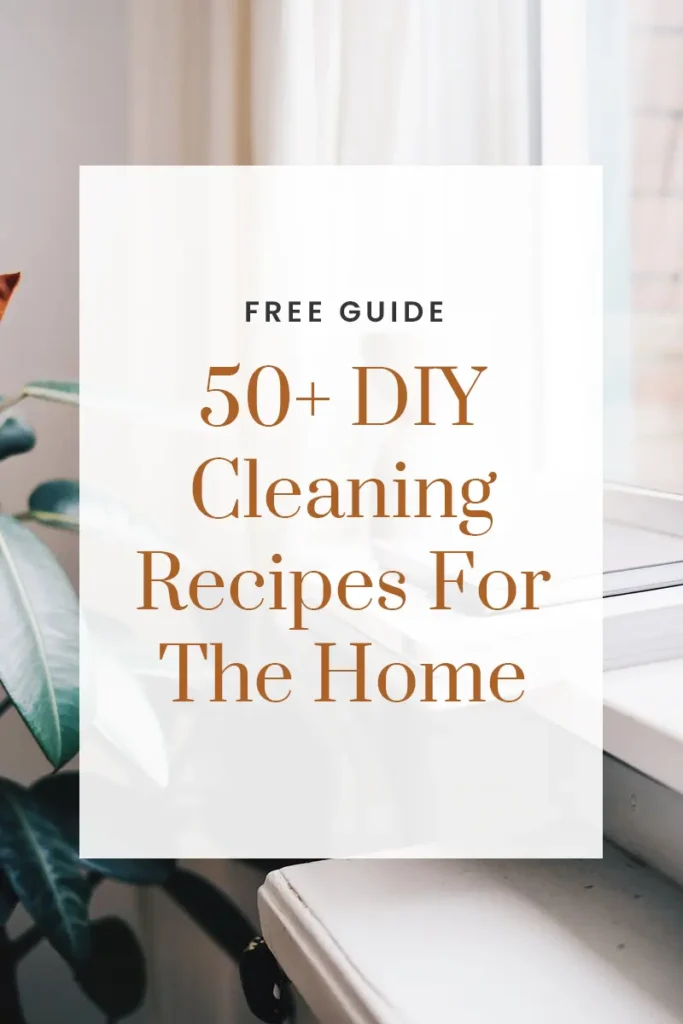
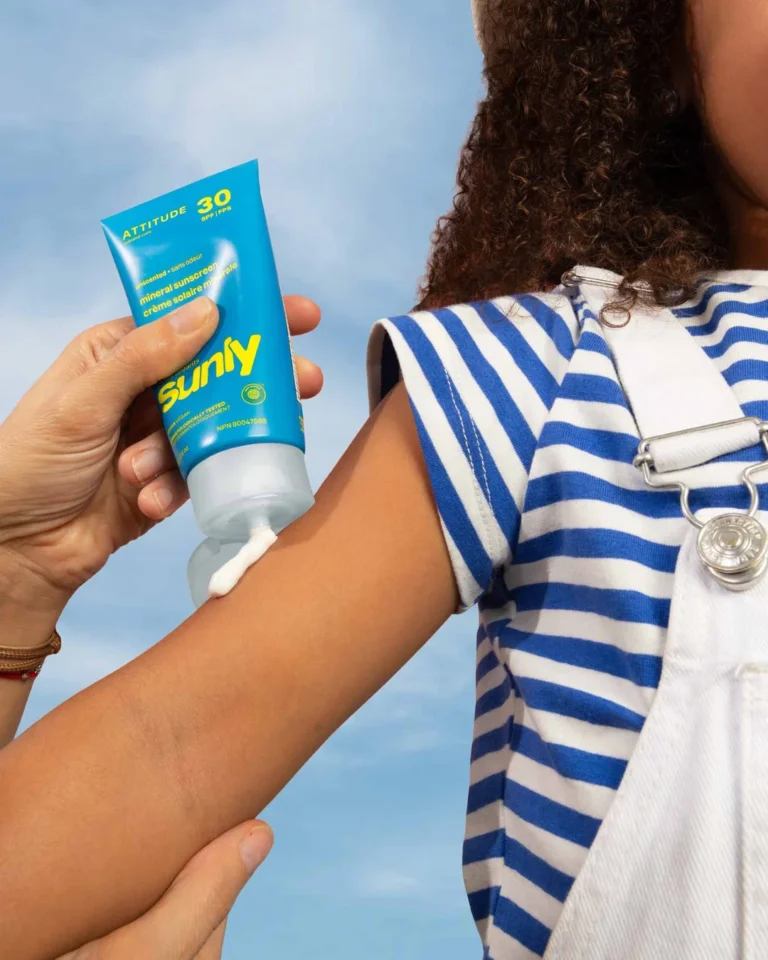

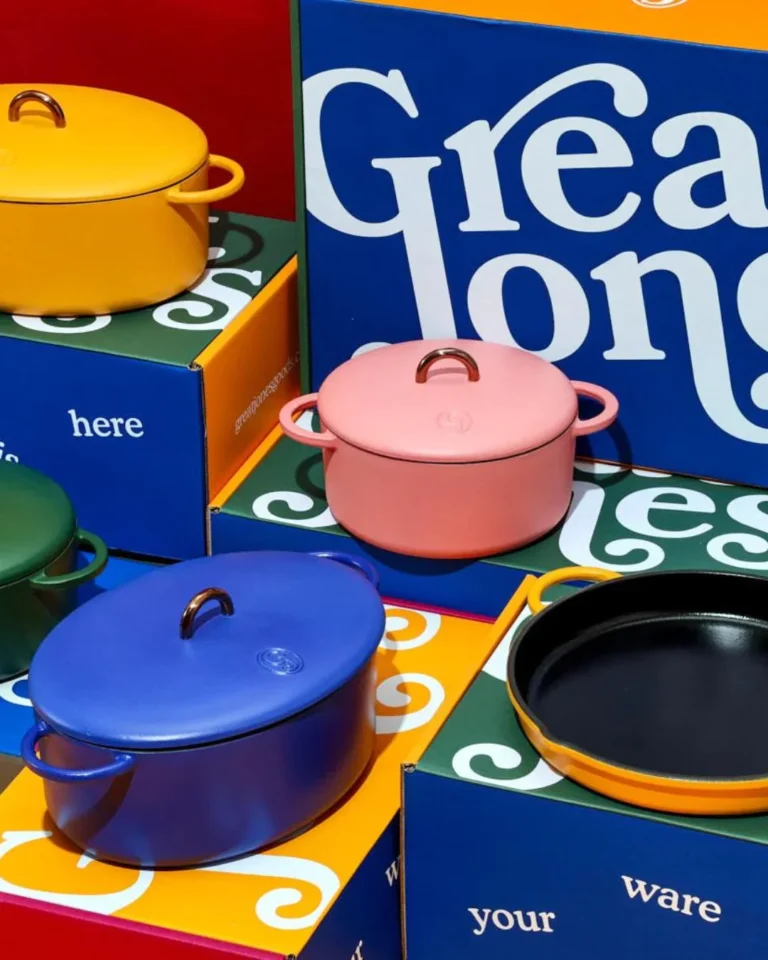

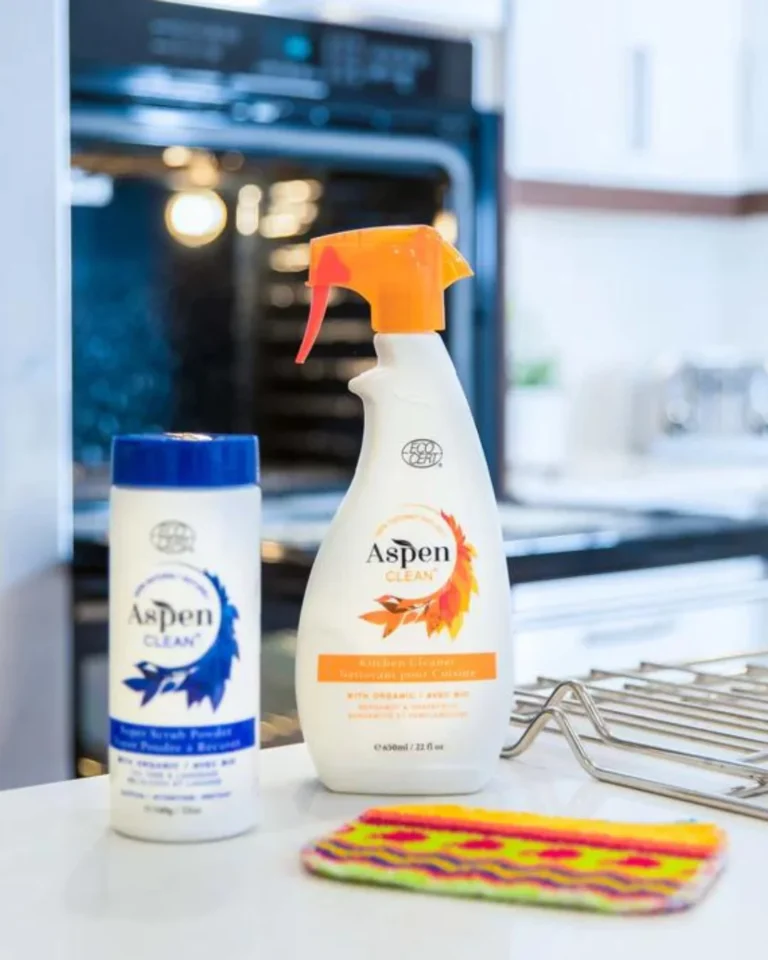
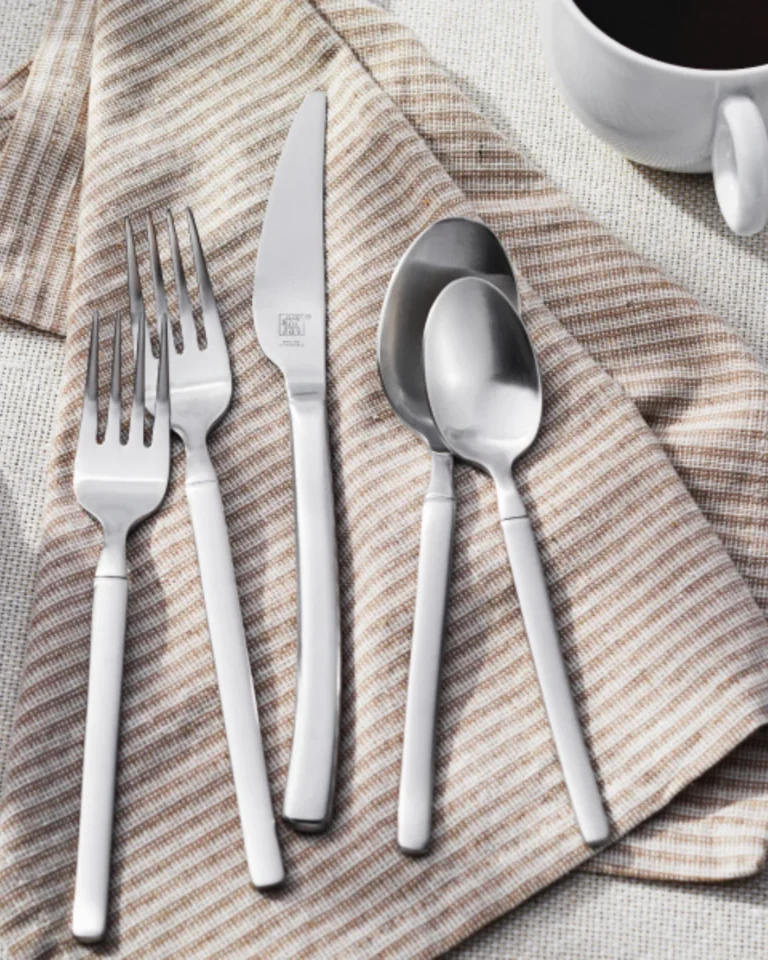


I love these swaps!
Thanks so much!